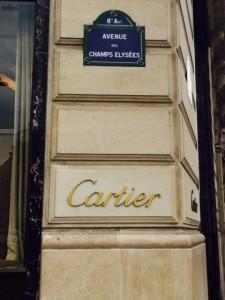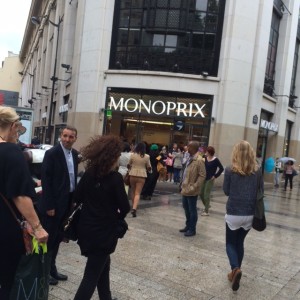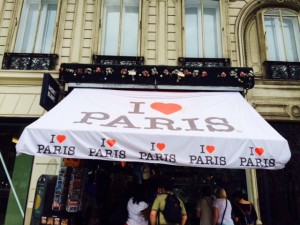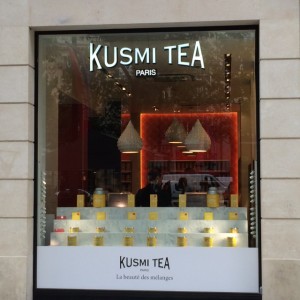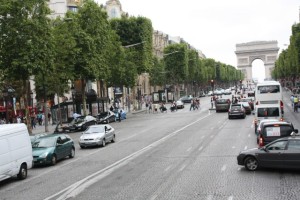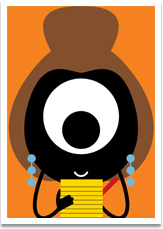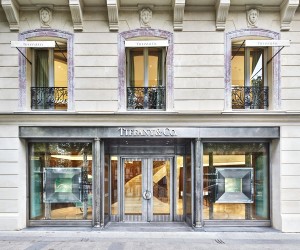
The new façade of Tiffany’s store on 62 Avenue des Champs Elysées, the front door weighs three tons (Tiffany & Co.)
This week, Tiffany officially opens its new Paris store on the Champs Elysées with a party on the roof top of the Arc de Triomphe – the monument conceived by Emperor Napoleon himself.
Is this store opening a triumph too? Another success in the battle to reclaim from vendors of cheap food, tourist trinkets and fast fashion what is supposed to be a gorgeous and glorious avenue?
The fact that Tiffany took over from hamburger cafe Quick says it all. Now, at 62 Avenue des Champs Elysées, there is a graceful facade with the spirit of Haussmann – the architect who transformed the face of Paris in the 19th century. Add a wink to the New York jeweller’s Art Deco heritage and this newcomer looks spiffy.
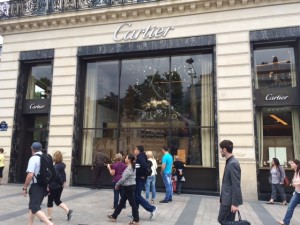
Cartier store on the Champs Elysées
It is exactly a decade since Cartier opened in 2004 a noble store on what the French themselves trumpet as ‘the most beautiful avenue in the world’. That was followed in 2005 by Louis Vuitton’s palace of a building on the corner of Avenue George V. It attracted customers like bees to honey, and the refurbishment of the boulevard had begun. Vuitton is still a premier shopping destination and this empire of luxury has been followed by other designer stores to bring back some retail class and clout.
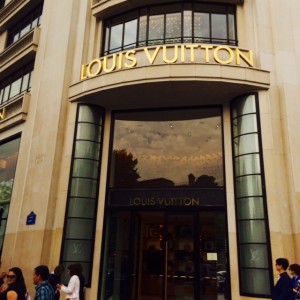
Louis Vuitton’s store on Champs Elysées
The first time I learned about the Champs Elysées was studying in England for school exams and reading Marcel Proust.
I longed to be with the sensitive young boy and his flirty childhood friend Gilberte Swann, the two children running through the green gardens of the Champs Elysées, with the clip clop of horse-driven carriages over the cobbles as Parisian society rejoined its mighty mansions.
Imagine my disappointment when I saw this fabled boulevard through an unstoppable flow of cars in front of dusty trees and grand buildings that had seen much better days. The traffic on the road was matched by vast plate glass windows of car show rooms, plus the nondescript, overpriced tourist eateries.
What had happened to the magical Elysian Fields, which is what the Champs Elysées really means?
As I stood in Tiffany’s last week – all steely silver mixed with warmly gilded marble – I had a palpable feeling that this street of dreams is undergoing a renaissance. The Tiffany store is elegant, with its staircase set around a central vacuum filled with translucent rods. Everywhere is the glint of steel, a soft touch of flat-painted magnolias and a chandelier with a flip of movement to suggest the fringe of a flapper dress.
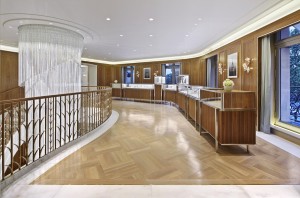
This Tiffany chandelier was designed by Studio Roso and holds 1,837 glass rods (Tiffany & Co.)
For Frédéric Cumenal, president of Tiffany & Co., this new initiative is the culmination of three existing Paris stores, including the Rue de la Paix, which was opened in 1999. The executive calls the opening of the Champs Elysées store ‘”the ultimate and symbolic representation of the positioning of Tiffany as a mark of international luxe.”
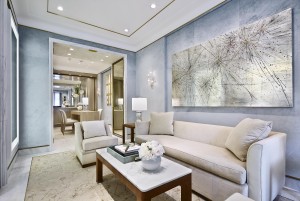
Tiffany’s bridal and client areas (Tiffany & Co.)
From starting prices of a few hundred euros for simple, silver pieces, to the light and welcoming bridal and client areas, the store is friendly and airy. The complexity of the jewellery and the prices go up as the floors get higher.
The general effect is enticing and might be called “luxury light’. And that is a fair description of the revival of the ‘Champs’ as a deluxe market place.

Guerlain’s prettily decorated façade (Pol Barril)
Further down the avenue, going towards the Place de la Concorde, a new Guerlain has emerged at 68 Champs Élysées. The historic beauty of the fragrance store, with its century old Carrara marble, has undergone a makeover, bringing a 21st century glamour to treatment rooms overlooking the wide street and to private areas to welcome special clients.
Like Sephora, the beauty supermarket on the Avenue, Guerlain is owned by LVMH (Moët Hennessy Louis Vuitton) and Peter Marino, the company’s favourite architect, has undertaken the refurbishment. Using shimmering pink/beige glass, four Baccarat crystal chandeliers and a giant golden star, the blend is old and new in homage to Paris as the ‘City of Light’.
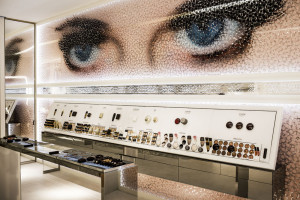
Guerlain’s new make-up studio under the watchful gaze of Norbert Brunner’s ‘The Eyes’ (Pol Barril)
The new area, developed in a space beside the historic Guerlain building as a hall of fragrance, make-up and skin care, ends with something utterly Parisian: a stylish restaurant.
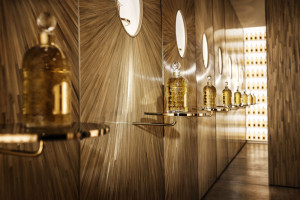
Guerlain’s Private consultation salon (Pol Barril)
I was almost convinced that the Champs Elysées had restored a glamorous retail environment. But I remembered looking out of Tiffany’s side window and seeing the name on the store next door: Monoprix – one of France’s cheap and cheerful supermarkets.
Then the thought hit me: the Champs Elysées today is not really about a return to haute luxe. It is rather a ringing affirmation that high and low co-exist in today’s consumer world.

Laduree’s enticing macaroon-filled window
I began a full tour of both sides of the avenue, starting with Ladurée, the pale green sugar plum fairy building, its windows filled with pastel macaroons. Ever since the city of Paris enlarged the side walks, Ladurée’s outside extension has become the favourite street cafe for foreign visitors – the Japanese in particular taking selfies with a tower of macaroons.
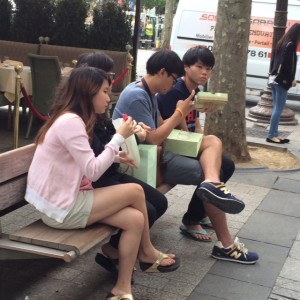
Ladurée is enjoyed by tourists on a Champs Elysées bench
I soon discovered that the Champs Elysées today offers a master class in high/lo shopping. Right beside the noble Cartier store with its richly decorated windows is a parody of a tourist shop with ‘I love Paris’ in scarlet on the canvas canopy.
Opposite the sleek, modern Hugo Boss store with its streamlined menswear and the equally dynamic and sporty Lacoste, is a McDonald’s. The heavily- marketed Nespresso coffee shop competes with classy Kusmi tea.
Everything in the avenue seems like a fashion face off. After Tiffany and Guerlain comes the fast fashion Zara. And opposite that section of affordably priced shops, is Abercrombie & Fitch, far more famous in France for its raunchy male staff than its clothes.
But is the famous Avenue now back on track to be as Haussmann intended? I looked at the shuttered Virgin megastore, thinking that how that empty building is developed may define the Champs for this millennium.
But how to define the 2014 customers? The Champs Elysées has 100 million visitors a year – and they appear to be not so much aspirational as open minded, happy to shop in stores from A-list names to Zara.
There is a tidal wave of Chinese tourists that would have been unthinkable a decade ago. Every colour and ethnicity walks the boulevard, although the Parisians themselves are the rarest of visitors, perhaps deigning to pass by to one of the many cinemas. Across the world, famous streets rise and fall. In New York, Fifth Avenue started edging back upwards as a chic spot when Louis Vuitton planted itself at the Corner of E.57th street, right opposite historic Tiffany.
In London, Burberry ‘s mansion of a store has brought new fashion life to Regent Street.
Yet the Champs Elysées is different. If Proust’s vision was of the ultimate in aristocratic elegance, the French avenue today remains stubbornly for the people.
All of the people.
So let them eat Ladurée cake! And mark their love for this wide, welcoming avenue with a silver heart from Tiffany.

